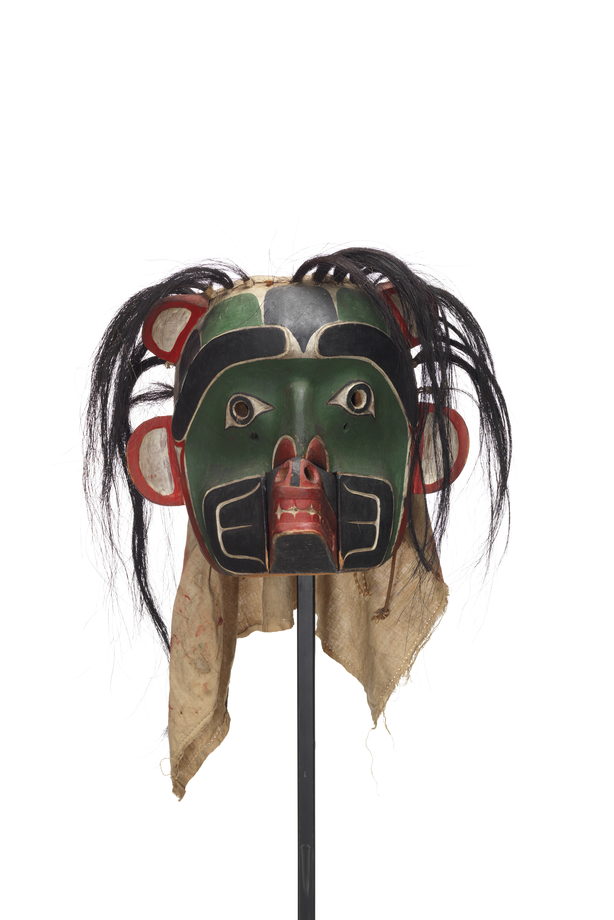Sap´agamł
Echo Mask
The Echo Mask contains interchangeable mouthpieces representing different characters. The dancer covers his face and then reveals the character of the mouthpiece. As the mouthpiece is revealed, the dancer is transformed from one being into another. He moves in a manner suggesting the characteristics of the mouthpiece that is being used. The three mouthpieces with this Echo mask are the raven, eagle and bear.
Owner
Arthur Bondsound, Kwikwasut´inuxw (Gilford Island)
Creator
Sam Charlie, Yekutłikalas
More Information
There are several stories that tell how the Echo dance came to the Kwakwaka’wakw. In one story, the Echo dance came through marriage from the Oweekeno. It is believed that in a cave in their territory lived an incredible creature called the Sap´a that could transform and imitate anything it heard and saw. When anything made noise in this mountainous region, the Sap´a would imitate the noises it heard and would transform and become the being it encountered. The Echo Mask contains interchangeable mouthpieces representing different characters from the four Kwakwaka’wakw realms of sky, land, sea and the underworld. The dancer covers his face and then reveals the character of the changeable mouthpieces that are being used. As the mouthpiece is revealed, the dancer is transformed from one being into another, and the dancer moves in a manner suggesting the characteristics of the mouthpiece being exhibited. The three mouthpieces with this Echo mask are the raven, eagle and bear.
Catalogue Information
Materials
Wood, Cedar; Paint; Hair, Horse; Metal, Wire; Metal, Nails; Twigs
Accession Number
80.01.145 a-d
Physical Description
Humanoid face mask carved in wood and painted, coming with three animal-like mouthpieces. All parts are carved from red cedar. The mask itself is made in five parts: the head is one unit, with the four ears carved separately and nailed on (a). The three mouthpieces comprise – ‘b’ a raven’s beak, ‘c’ a bear and ‘d’ an eagle. Each mouthpiece has a flat tenon, jointed in and nailed, which protrudes and can be fitted snugly in the slot-like mouth of the mask. Long tufts of black horse-hair are pegged into the sides and upper edge of the mask. A rigid harness of bent, split twigs is wired and nailed to the back of the mask. A thick harness cord is tied to the twigs. A large piece of flour sacking is nailed to the back edges to serve as head cover. The mask and mouthpieces are painted black, red, green and white.

 Video Downloads
Video Downloads